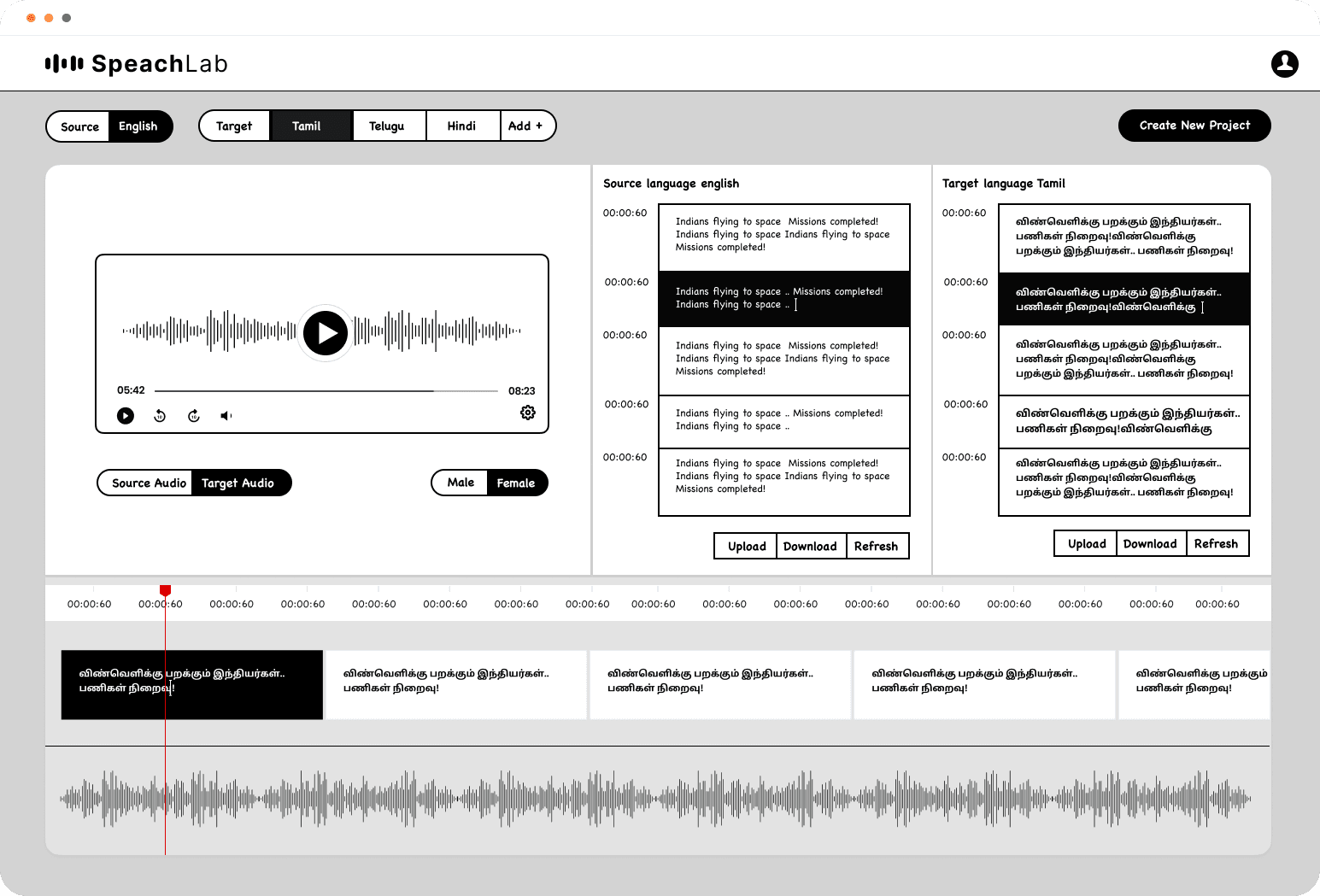ASR - AI
Spring Lab is an innovative AI tech research lab headquartered in Chennai, dedicated to the development of Automatic Speech Recognition (ASR) models tailored for Indian languages.
Introduction
Spring Lab is an innovative AI tech research lab headquartered in Chennai, dedicated to the development of open-source Automatic Speech Recognition (ASR) models tailored for Indian languages. Founded by alumni and faculty members of IIT Madras, the research lab specializes in ASR and allied areas of Self-Supervised Learning, Speaker Normalization, Verification, and Adaptation.
As part of my MIT AI Design project, I played a pivotal role in crafting the product design for the ASR Project at Speech Lab, collaborating closely with IIT students at IIT Madras. The innovative ideas, concepts, and technologies emerged from the collective efforts of both myself and the IIT students in their respective areas of expertise.
Challenges in ASR AI Product Design
Designing AI systems for multi-speaker scenarios involves navigating several key challenges. Ensuring high-quality and diverse training data can be difficult, affecting model generalization, while real-time processing for live scenarios may face latency issues. Integrating user feedback seamlessly into the adaptation process is another hurdle, as is addressing ethical considerations and mitigating biases. Furthermore, maintaining model explainability to foster user trust and scaling systems to handle increasing demands pose additional complexities. Lastly, balancing advanced model complexity with a user-friendly interface requires careful optimization to enhance user experience.
Solutions and Research Extensions
To tackle these challenges, implementing rigorous data checks, diversifying sources, and employing data augmentation techniques ensure robust datasets. Optimizing model architecture, leveraging efficient algorithms, and exploring edge computing minimize processing delays. Developing user-friendly feedback systems with natural language processing aids seamless integration, while regular bias audits and fairness-aware training uphold ethical standards. Transparency through interpretable models and explainable outputs fosters trust, and cloud-based solutions and parallel processing enable scalability. Research extensions into advanced deep learning architectures, ASR advancements, and transfer learning further enhance performance. Iterative user testing and HCI refinements optimize the interface, ensuring the AI product not only meets current needs but also evolves with user and industry demands.
Conclusion
As we arrive at the conclusion of this project's journey, it's time to reflect on the impact of my efforts. Here, you'll find a detailed analysis of the results, showcasing both quantifiable achievements and qualitative advancements. But it's also a chance for learning and growth. I'll share the insights I gleaned along the way and the lessons that I'll carry forward into my future endeavors. This retrospective is not just about celebrating success; it's about continuous improvement and a deep-seated passion for transforming challenges into triumphs.




